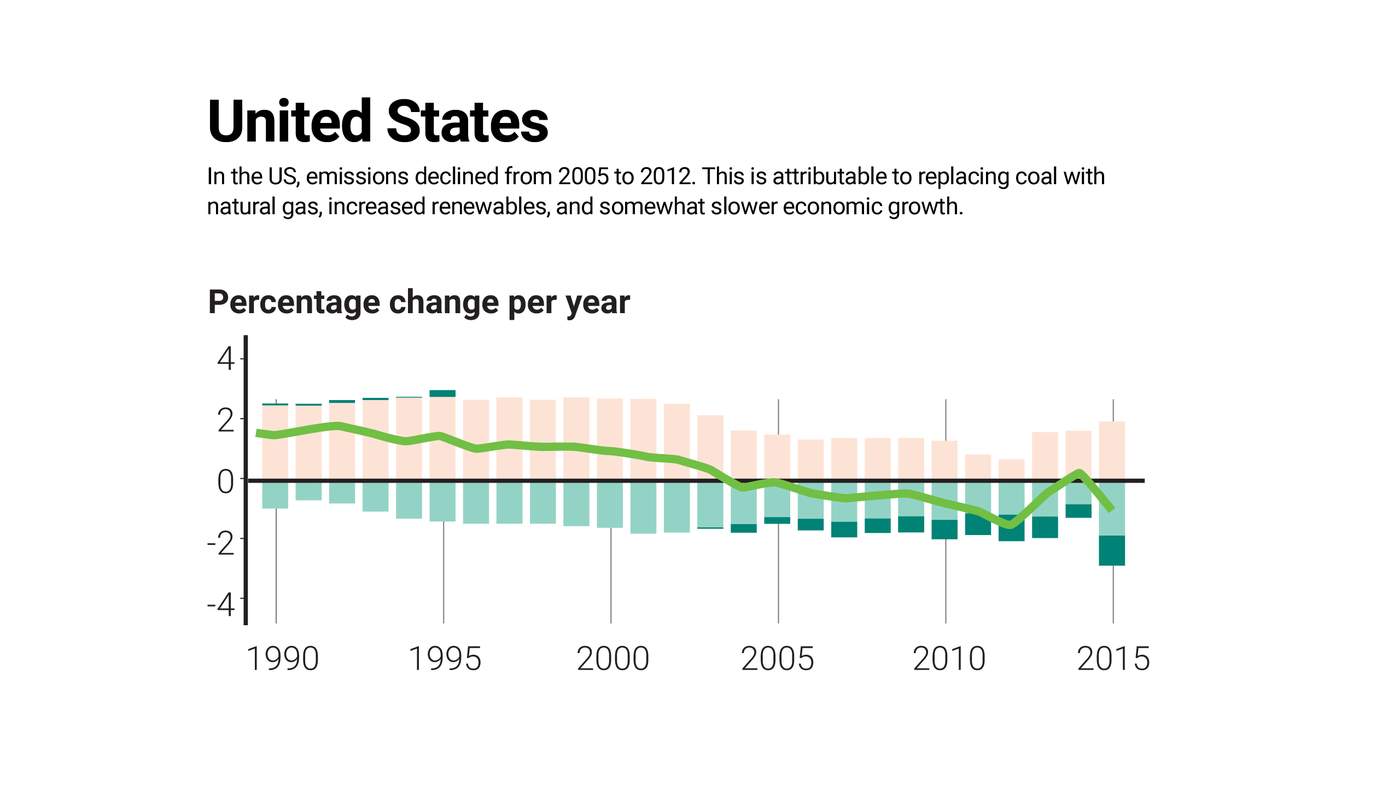Assessing The Risks And Rewards Of The Great Decoupling

Table of Contents
Economic Risks of the Great Decoupling
The transition away from globally integrated supply chains brings substantial economic risks. Businesses must carefully consider these potential downsides before making strategic decisions.
Increased Production Costs
Relocating manufacturing, reshoring operations, and establishing new supply chains significantly increase production costs. This is a core aspect of the Great Decoupling's economic impact.
- Higher labor costs in developed nations: Reshoring often means paying higher wages to workers in developed countries compared to lower-cost regions.
- Increased transportation expenses: Shifting production closer to consumers might reduce transit times, but it can also lead to higher transportation costs, especially with shorter, more frequent shipments. Recent data shows a 30% increase in shipping costs since the start of the pandemic, partially attributable to supply chain restructuring.
- Potential for supply chain disruptions: Establishing new supply chains takes time, and during the transition period, businesses face a greater risk of disruptions due to unforeseen circumstances.
Inflationary Pressures
The Great Decoupling's impact on inflation is undeniable. Increased production costs, coupled with potential shortages, are major contributing factors.
- Reduced competition: Regionalization can lead to less competition, potentially allowing businesses to increase prices.
- Potential for price gouging: Supply chain bottlenecks and reduced availability of certain goods can create opportunities for price gouging.
- Impact on consumer prices: The increased costs associated with decoupling are eventually passed down to consumers, leading to higher prices for everyday goods. For example, the price of microchips, heavily impacted by supply chain disruptions, has affected the cost of electronics and automobiles.
Geopolitical Instability
The shift towards regionalized supply chains can exacerbate existing geopolitical tensions and even trigger new trade conflicts.
- Protectionist policies: Countries may implement protectionist measures to support their domestic industries, leading to trade disputes and reduced global trade.
- Trade disputes: The decoupling process can fuel trade disputes as nations compete for resources and market share.
- Potential for retaliatory measures: Trade disputes can escalate, leading to retaliatory measures such as tariffs and sanctions, further disrupting global trade flows. The ongoing US-China trade war serves as a prime example of this risk.
Economic Rewards of the Great Decoupling
Despite the risks, the Great Decoupling also presents several significant economic rewards. Strategic planning can help businesses harness these opportunities.
Enhanced National Security
Reducing reliance on single-source suppliers, particularly for critical goods and technologies, is a key benefit of decoupling. This strengthens national security.
- Increased resilience to geopolitical shocks: Diversified supply chains are less vulnerable to disruptions caused by geopolitical instability.
- Improved control over strategic resources: Regionalization can help countries gain greater control over the production and distribution of essential resources.
- Reduced vulnerability to sanctions: Diversification minimizes the impact of sanctions imposed on specific countries or companies. For example, countries are actively reshoring semiconductor manufacturing to mitigate reliance on a few key players.
Boost to Domestic Industries
The Great Decoupling can provide a significant boost to domestic industries and create new job opportunities.
- Increased demand for locally produced goods: Regionalization increases demand for goods produced within a country's borders.
- Stimulation of innovation and technological advancement: The need to establish new supply chains encourages innovation and investment in advanced technologies.
- Potential for higher-paying jobs: Reshoring and the growth of domestic industries can lead to the creation of higher-paying jobs in developed nations. The manufacturing sector in many Western countries is showing signs of resurgence due to this trend.
Improved Supply Chain Resilience
Diversified supply chains are inherently more resilient to disruptions.
- Mitigation of risks associated with natural disasters: Having multiple sourcing options reduces the impact of natural disasters that may affect a single region.
- Mitigation of risks associated with pandemics: The COVID-19 pandemic highlighted the vulnerability of globally integrated supply chains. Decoupling offers a pathway to greater resilience against future pandemics.
- Improved risk management strategies: Businesses can employ better risk management strategies by diversifying their supply chains and developing contingency plans. Companies are increasingly investing in scenario planning and supply chain mapping to mitigate risks.
Navigating the Great Decoupling: Strategies for Businesses
Businesses need to adopt proactive strategies to navigate the complexities of the Great Decoupling successfully.
Diversification of Supply Chains
Reducing reliance on single suppliers is crucial for mitigating risks.
- Geographic diversification: Source materials and components from multiple regions to reduce vulnerability to localized disruptions.
- Multiple sourcing options: Establish relationships with multiple suppliers to ensure a consistent supply of goods and services.
- Building strong relationships with suppliers: Foster strong relationships with key suppliers to ensure collaboration and transparency.
Investment in Automation and Technology
Technology plays a key role in improving efficiency and resilience.
- Automation: Automation can improve efficiency, reduce labor costs, and enhance overall supply chain agility.
- AI-powered logistics: Artificial intelligence can optimize logistics, improve forecasting accuracy, and enhance decision-making.
- Predictive analytics: Predictive analytics can help businesses anticipate potential disruptions and take proactive steps to mitigate risks.
Risk Assessment and Mitigation
Thorough risk assessment and proactive mitigation are essential.
- Identifying potential disruptions: Conduct thorough assessments to identify potential supply chain disruptions, considering geopolitical risks, natural disasters, and pandemics.
- Developing contingency plans: Create contingency plans to address potential disruptions and ensure business continuity.
- Insurance and hedging strategies: Explore insurance and hedging strategies to mitigate financial losses associated with supply chain disruptions.
Conclusion
The Great Decoupling presents a multifaceted landscape of risks and rewards. While increased costs and geopolitical instability pose significant challenges, opportunities exist to enhance national security, boost domestic industries, and build more resilient supply chains. By carefully assessing the risks and implementing proactive strategies, businesses can navigate this transformative period and position themselves for success in the evolving global economy. Understanding the nuances of the Great Decoupling and developing robust adaptation plans is critical for long-term success. Begin assessing your own supply chain's vulnerability to the effects of the Great Decoupling today.

Featured Posts
-
 Derrota Del Lyon Ante El Psg Analisis Del Encuentro
May 08, 2025
Derrota Del Lyon Ante El Psg Analisis Del Encuentro
May 08, 2025 -
 Ptt Personel Alim Tarihleri 2025 Kpss Ile Basvuru
May 08, 2025
Ptt Personel Alim Tarihleri 2025 Kpss Ile Basvuru
May 08, 2025 -
 Dc Comics Krypto The Last Dog Of Krypton A Deep Dive
May 08, 2025
Dc Comics Krypto The Last Dog Of Krypton A Deep Dive
May 08, 2025 -
 Pakstan Qwmy Hyrw Aym Aym Ealm Ky 12wyn Brsy Ky Tqrybat Ka Aneqad
May 08, 2025
Pakstan Qwmy Hyrw Aym Aym Ealm Ky 12wyn Brsy Ky Tqrybat Ka Aneqad
May 08, 2025 -
 Kuzma Weighs In Reaction To Tatums Trending Instagram Post
May 08, 2025
Kuzma Weighs In Reaction To Tatums Trending Instagram Post
May 08, 2025
Latest Posts
-
 Understanding Ubers New Driver Subscription Plans
May 08, 2025
Understanding Ubers New Driver Subscription Plans
May 08, 2025 -
 Uber One Kenya Your Guide To Discounts And Free Delivery Services
May 08, 2025
Uber One Kenya Your Guide To Discounts And Free Delivery Services
May 08, 2025 -
 Prelista De Brasil Neymar Y Su Posible Regreso Contra Argentina
May 08, 2025
Prelista De Brasil Neymar Y Su Posible Regreso Contra Argentina
May 08, 2025 -
 Uber Ditches Commission Model Subscription Plan Details For Drivers
May 08, 2025
Uber Ditches Commission Model Subscription Plan Details For Drivers
May 08, 2025 -
 Unlock Uber One Benefits In Kenya Rides And Food Deliveries
May 08, 2025
Unlock Uber One Benefits In Kenya Rides And Food Deliveries
May 08, 2025
